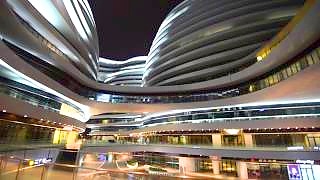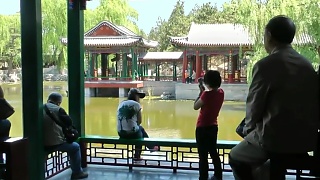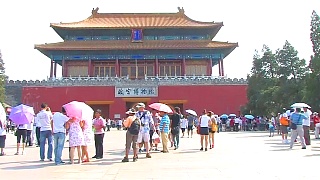
|
With Ian Louis ...
With Seiu Travel ...
Visitor Guide to TaiHe River, TianJin
Overview
The TaiHe River, located in TianJin, is a picturesque waterway that offers a blend of natural beauty and cultural heritage. Known for its serene landscapes and historical significance, the TaiHe River is a must-visit destination for those exploring TianJin.
Getting There
By Air: TianJin Binhai International Airport (TSN) is the nearest airport, located about 20 kilometers from the city center. From the airport, you can take a taxi, airport shuttle, or public bus to reach the TaiHe River area.
By Train: TianJin Railway Station and TianJin West Railway Station offer convenient access to the city from major destinations across China. From the stations, you can take local transport to reach the river.
By Bus: Long-distance buses from nearby cities and provinces also provide access to TianJin. The main bus stations in TianJin are TianJin Coach Terminal and TianJin West Coach Station.
Getting Around
Public Transport: TianJin has an extensive public transport network, including buses and a metro system, making it easy to navigate the city and reach the TaiHe River.
Taxis: Taxis are readily available and relatively inexpensive. Ride-hailing apps like DiDi are also widely used.
Biking: Bike-sharing services provide a convenient way to explore the riverbanks and surrounding areas.
Main Attractions
Scenic Walkways
The TaiHe River features well-maintained walkways along its banks, offering beautiful views of the water and surrounding greenery. It's an ideal place for a leisurely stroll, jogging, or simply relaxing by the river.
Historical Bridges
The river is spanned by several historical bridges, each with its own unique architecture and history. These bridges provide excellent photo opportunities and a chance to appreciate the engineering marvels of the past.
Riverside Parks
Several parks are located along the TaiHe River, including TaiHe Park and Haihe Cultural Square. These parks offer lush green spaces, recreational facilities, and picturesque spots for picnics and relaxation.
Boat Rides
Boat rides on the TaiHe River provide a unique perspective of the city and its landmarks. You can choose from various types of boats, including traditional wooden boats and modern yachts, to explore the river.
Night View
The TaiHe River is especially beautiful at night, when the bridges and buildings along the river are illuminated. A night cruise offers a magical experience, with the city's lights reflecting on the water.
Local Cuisine
While visiting the TaiHe River, you can enjoy a variety of local and regional dishes. Here are some recommendations:
Goubuli Baozi: TianJin's famous steamed buns, known for their delicate flavor and intricate folds.
Erduoyan Zhagao: A traditional TianJin snack made of glutinous rice and red bean paste, fried to perfection.
Jianbing: A popular Chinese street food, similar to a savory crepe, filled with egg, scallions, cilantro, and crispy wonton strips.
Shopping
Ancient Culture Street: A vibrant pedestrian street offering traditional Chinese handicrafts, antiques, and souvenirs.
BinJiang Dao Commercial Street: A modern shopping area with a wide range of international and local brands, perfect for a shopping spree.
HePing Lu Shopping District: Known for its department stores and specialty shops, this district is a shopper's paradise.
Accommodation
Luxury Hotels: TianJin has several high-end hotels offering excellent amenities and services, such as the Ritz-Carlton TianJin and the St. Regis TianJin.
Mid-Range Hotels: There are numerous mid-range options providing comfortable accommodations at reasonable prices, including international chains like Marriott and local boutique hotels.
Budget Accommodations: Budget travelers can find affordable guesthouses, hostels, and budget hotels throughout the city.
Historical Background of TaiHe River
The TaiHe River, also known as the "Peace River," has played a significant role in the history and development of TianJin. The river has been a vital waterway for trade, transportation, and cultural exchange for centuries.
During the Ming and Qing Dynasties, the TaiHe River was an essential part of the Grand Canal, facilitating the movement of goods and people between northern and southern China. The river's strategic location contributed to TianJin's growth as a major commercial and trading hub.
In modern times, the TaiHe River has become a focal point for urban development and tourism. Efforts to beautify and preserve the river have made it a popular destination for both locals and visitors, blending the city's rich history with its vibrant present.
Tips for Visitors
Best Time to Visit: The best times to visit the TaiHe River are spring (April to June) and autumn (September to November) when the weather is mild and pleasant.
Clothing: Wear comfortable walking shoes and dress in layers to accommodate changing temperatures. Bring a hat and sunscreen if you plan to spend time outdoors.
Respect Local Customs: Be respectful of local customs and traditions, especially when visiting cultural and historical sites.
Language: While Mandarin is widely spoken, learning a few basic phrases or using a translation app can be very helpful.
Plan Your Visit: The TaiHe River offers a mix of natural beauty and cultural attractions. Plan your visit to include both leisurely activities and sightseeing to fully appreciate the area's offerings.
Conclusion
The TaiHe River in TianJin, with its scenic walkways, historical bridges, and vibrant parks, offers a unique blend of natural beauty and cultural heritage. Whether you're taking a leisurely stroll along the riverbanks, enjoying a boat ride, or exploring the city's rich history, the TaiHe River provides a serene and memorable escape. Plan your visit carefully to make the most of your time in this picturesque and historically significant area of TianJin.
|
 PinXi Liu 六 品析, age 8, amazing rock guitarist
PinXi Liu 六 品析, age 8, amazing rock guitarist











![With Roger Waters. Exceptional talent here. Love music; love peace ? Then you`ll love this. Know every note, or first time listen - let`s go . . . . . Ashes and diamonds; We are all equal, In the end. Mother, will they drop the bomb ? [hint - they did already - two different designs tested on the [`inferior`] women, children and elderly of Hiroshima and Nagasaki; among others]. Mother, should I trust the government - [no ****ing way ! Five Eyes brat pack] Mother / state / control. Only because the masses are (deliberately) distracted by TV, shopping, sex, fashion, alcohol, gambling, and more, can the tiny minority elite enslave us. It`s like a cult; part of it ? Alive, or just a robotic believer ?? A fool is one who doesn`t know what they are doing, or why they are doing it. Don`t be fooled. Bonus film 1 : Bonus film 2 - Us and Them : Or is it really just `WE` ?! Don`t believe anyone. Don`t believe any ism. Don`t even believe in truth. Truth is reality; no belief required. It`s all there to all who can see clearly, without blinkers. Something different - 100 seconds to midnight (the very end; music)](https://img.youtube.com/vi/4vu24954p4k/mqdefault.jpg)












